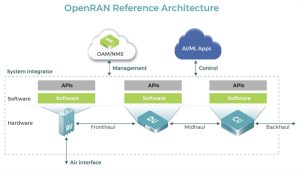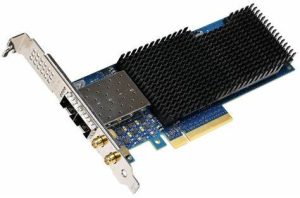5G deployment costs are high, it is better to switch to virtualized vRAN
Following the commercialization of 5G from 2019 to 2020, 2021 has become a critical year for accelerating 5G development. Many countries and operators have already started the process of rapidly expanding coverage after official commercial use, and 2022 may be a busier and more aggressive year for operators to diversify their 5G deployments. For example, this year AT&T and Verizon will launch the C-band 5G that has been obtained through bidding, and China Radio and Television also plans to officially launch 5G account distribution this year.
However, Japan, as one of the first countries to launch 5G commercialization, even with the promotion of the four major operators NTT Docomo, KDDI, Softbank and Rakuten, its 5G Radio Access Network (RAN) is more advanced than China in terms of deployment progress and availability. , South Korea and even Australia lag behind. Rakuten, for example, has an excellent average download speed of 224.3 Mbps, but its coverage is the smallest. And Japan does not have any low-band 5G, and the mid-band from 3.6GHz to 4.5GHz is still used.
To this end, several major Japanese operators are determined to use technologies such as Open vRAN to speed up the deployment process. For example, Rakuten has acquired Open RAN software provider Altiostar. Such a route can be said to combine 5G with cloud services. Even in a highly competitive environment like the four major operators, it can increase capacity, reduce costs and provide new service options as soon as possible.

Nowadays, many networks have developed to a more open architecture that is more in line with cloud networks. The reason why the construction of 5G RAN is so consumable and labor-intensive is because the closed interface in the traditional architecture and the dedicated hardware solution limit the choice of the operator to diversify the supply chain, so that 70% of the capital expenditure is spent on the RAN. construction and management. On the other hand, Open vRAN adopts a modular strategy to design and construct the network. With the help of software and hardware decoupling, open interfaces, and general-purpose hardware, it reduces costs for operators.
Samsung
For Samsung, its consumer electronics and foundry business is a top priority, but they are also interested in the communications market, especially when it comes to the deployment of 5G. Samsung’s 5G vRAN solution consists of Samsung’s vCU (virtualized central unit), vDU (virtualized distribution unit) and a series of radio units. Operators can replace the dedicated baseband hardware used in the traditional RAN architecture with software on a general-purpose computing platform. Supports seamless migration of 5G networks, giving operators the ability to add new features as quickly as possible.
Last year, Samsung partnered with Australian operator TPG Telecom to conduct 5G vRAN tests on its 26GHz band. In this test, Samsung’s 5G millimeter-wave product Compact Macro was integrated, and its vRAN solution was directly applied to the COTS (commercial off-the-shelf) server. This solution can further add hardware accelerators according to bandwidth requirements.
We mentioned Japan’s plan for Open VRAN above. Also last year, Samsung cooperated with KDDI to promote advanced research on vRAN. Recently, the joint development between the two has finally come to fruition. KDDI announced the successful deployment of the world’s first commercial 5G SA Open RAN in Japan. The product uses Samsung’s vCU, vDU and Fujitsu’s radio unit (MMU).
According to Samsung, 5G SA Open RAN can provide higher performance, faster speed and lower latency for applications such as AR/VR, factory automation, and autonomous vehicles and traffic management. Although Samsung also has its own hardware solution on the radio unit, it provides a fully virtualized vRAN software solution on vRAN, and the COTS hardware still has to be handed over to other general-purpose computing platforms.
Intel
Although Intel is not mainly in the communication business, we mentioned COTS servers above, which is Intel’s cloud business scope. With the advantages of x86 hardware in server and cloud computing, x86 COTS server can be said to be the most common and most suitable solution for large-scale deployment. To this end, Intel has also launched its own vRAN software solution, FlexRAN. FlexRAN is Intel’s reference design for 4G and 5G baseband PHYs, leveraging the Xeon family of server processors and Intel’s architecture to deploy scalable and cloud-native RAN solutions.

In addition, Intel not only gains vRAN’s x86 COTS server market, but also has hardware acceleration solutions for vRAN. Operators can choose either Intel’s FPGA programmable accelerator card N3000 or the vRAN-specific accelerator ACC100. Compared with FPGA solutions, ACC100 has lower unit cost and power consumption, and has faster time-to-market and lower engineering costs than standard-cell ASIC solutions.
For example, domestic server manufacturer Yunda recently announced to cooperate with Intel and Radisys to jointly develop and launch the OmniRAN virtual radio access network (vRAN) solution. OmniRAN uses Intel’s FlexRAN cloud radio access VNF as a reference architecture, and with Radisys’ distributed radio access network software architecture Connect 5G RAN, builds cloud-native vRAN on Yunda’s EGX63IS-1U server, and uses Intel’s third-generation Xeon The processor platform improves the load performance of the 5G vRAN network.
Virtualized vRAN can be said to be a feasible solution for 5G deployment in the future. Many operators and hardware and software manufacturers have already invested in the development of vRAN. But this does not mean that the traditional architecture is useless. On the contrary, the traditional architecture that has been deployed can also increase its network flexibility by adding vRAN and provide more services, such as 5G network slicing. For Intel and a number of server manufacturers, vRAN may bring them more business opportunities, especially in some regions where 5G deployment is relatively backward, such as India.


